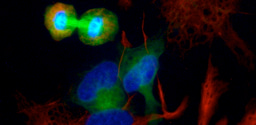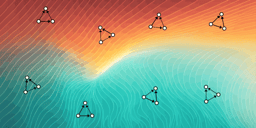Rejuvenation by cell reprogramming
Published in Bioengineering & Biotechnology
The discovery by Yamanaka and Takahashi (2006) of a small group of genes (now known as the Yamanaka genes) whose physiological role seems to be the rejuvenation of embryos immediately after conception, has started a revolution in biology as these genes not only allow somatic cells to be reprogrammed but also rejuvenated. The rejuvenation of cultured cells from senile individuals (centenarians) was achieved in 2011 and today, rejuvenation of cells from aged individuals (animals or humans) is an almost routine procedure. In contrast, in vivo rejuvenation using the Yamanaka genes has proved to be much more challenging. Initially, transgenic mice for OSKM were used but when they were turned on, it was found that the genes are tumorigenic. In 2020, David Sinclair´s team demonstrated that gene therapy with the Yamanaka genes in the retina of nontransgenic old mice or mice suffering from glaucoma, was highly regenerative without causing any type of adverse effect (Lu et al, 2020). Surprisingly, from 2020 until now only the aforementioned paper by Sinclair had been published. In early 2024, a second paper was published, which reported that intravenous gene therapy with the Yamanaka genes in senile mice moderately prolongs their longevity and makes them healthier (Macip et al 2024 ).
Thus, our paper is the third to report that gene therapy with the Yamanaka genes in senile rodents has regenerative effects. We implemented OSKM gene therapy in the hippocampus (the brain region where memories are formed) of old rats and found that the treatment significantly restored their learning performance and, to a lesser extent, their memory. Interestingly, we observed that the treatment rejuvenated the epigenome of the hippocampus (the only region assessed). In rats, the methylation of hippocampal DNA increases with age (Chiavellini et al, 2022). The present report shows that OSKM gene therapy in old rats reverses part of the hippocampal DNA hypermethylation induced by aging, this is why we state that the treatment rejuvenates the epigenome.
This finding makes sense, as the primary actions of the Yamanaka genes are known to be on the epigenome.
In a parallel study (still unpublished) we implemented OSKM gene therapy in the hypothalamus of young female rats. The hypothalamus is the brain region that controls, among other basic functions, the reproductive system. We found that the treatment slows down the typical decline of fertility that occurs with age in females. It also delayed the age of estropause (menopause in the rat) in females.
Taken together, the above results point to a potential path to slow biological aging in young animals and rejuvenate their brain in old individuals. One of the tasks of medicine will be to find less invasive ways to deliver the OSKM genes to target regions of the brain.
References
-Horvath S, Lacunza E, … Goya RG. Cognitive rejuvenation in old rats by hippocampal oskm gene therapy Geroscience. 2024 Jul 22. doi: 10.1007/s11357-024-01269-y.
- Takahashi K, Yamanaka S. Induction of pluripotent stem cells from mouse embryonic and adult fibroblast cultures by defined factors. Cell 2006 ; 126 : 663-676. Doi 10.1016/j.cell.2006.07.024
-Lu Y, Brommer B, Tian X, Krishnan A, Meer M, Wang C, Vera DL, Zeng Q, Yu D, Bonkowski MS, Yang JH, Zhou S, Hoffmann EM, et al. Reprogramming to recover youthful epigenetic information and restore vision. Nature 2020, 588: 124-129. Doi : 10.1038/s41586-020-2975-4
- Macip CC, Hasan R, Hoznek V, Kim J, Lu YR, Metzger IV LE, Sethna S, Davidsohn N. Gene Therapy-Mediated Partial Reprogramming Extends Lifespan and Reverses Age-Related Changes in Aged Mice. Cellular Reprogramming. 2024 ;26(1): 24-32.
- Chiavellini P, Lehmann M, Canatelli-Mallat M, Zoller JA, Hereñu CB, Morel GR, Horvath S, Goya RG. Hippocampal DNA Methylation, Epigenetic Age, and Spatial Memory Performance in Young and Old Rats. J Gerontol A Biol Sci Med Sci. 2022 ; 77 (12) 2387-2394. Doi : 10.1093/ger
Follow the Topic
-
GeroScience

This is a premier bi-monthly, international, peer-reviewed journal that publishes cutting-edge research related to the biology of aging, pathophysiology of age-related diseases, and research on biomedical applications that impact aging and/or the pathogenesis of diseases associated with old age.




Please sign in or register for FREE
If you are a registered user on Research Communities by Springer Nature, please sign in